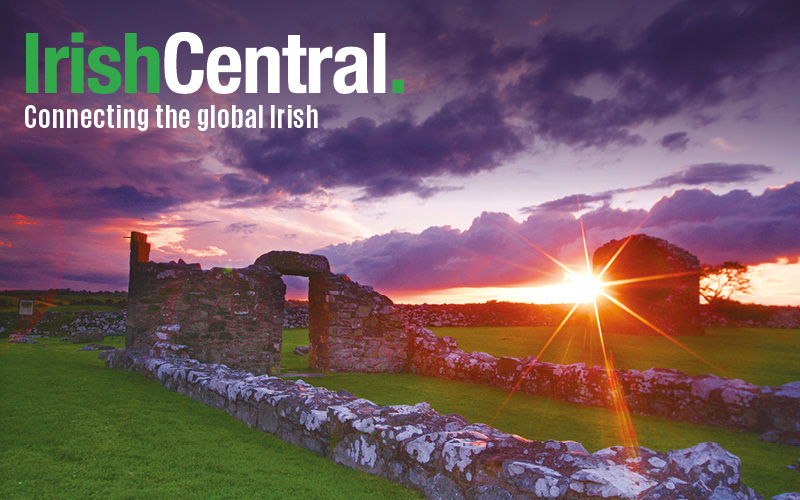When you cast your eye back over the past hundred years in the history of traditional Irish music, one of the seismic events was the arrival on America’s shores of the Sligo-born fiddle player Michael Coleman.
He would be the first of a significant wave of fiddlers from Sligo to settle in New York City, giving rise to a steadfast musical phenomenon that we call the Sligo/New York tradition that carries on vibrantly to this very day.
In August a new documentary was showcased at Fleadh Cheoil na hEireann in Sligo Town explaining its origins through the personal lives of Coleman and two contemporaries, James Morrison and Paddy Killoran, whose early pioneering recordings in the 1920s and 1930s would greatly influence Irish traditional musicians on both sides of the Atlantic for generations to come.
The new film The Sligo Masters, produced and directed by a Sligo videographer Micheal O Domhnaill and his Omedia production company, introduces us to a legacy that is as important today as it was when the trio of Coleman, Morrison and Killoran were furrowing new ground in America.
A team from Sligo led by musician and academic Oisin Mac Diarmada, historian Martin Enright and O Domhnaill came to New York a year ago to film some background for the project to reinforce the Big Apple ties and continuity.
The story starts with Coleman from Killavil just outside of Gurteen in South Sligo who was born in 1891 and reared in a household of music. Like many, he tried London first and then New York, arriving in 1914. His fiddling prowess was evident early on.
The Gaelic Revival started at the turn of the 20th century, and the nationalistic fervor that accompanied it sparked a greater interest in the native music and dance of Ireland. There was also a great deal of sentimentality and melancholy for the old country among many of the Irish emigrants forced to leave for Americay because of political or economic reasons.
Coleman’s music embodies those elements, and with the nascent recording industry springing up in New York City in the 1920s, new recording companies were eager to hit the ethnic marketplace. Coleman, who relied solely on his music for a living, became a successful and popular artist.
Those records were in great demand in America and Ireland and had a profound influence on his fellow musicians at home and abroad. Sadly Coleman’s personal life didn’t fare as well, with alcohol taking its toll. He died in 1945 and was buried in St. Raymond’s Cemetery in the Bronx.
Simultaneously, Morrison from Drumfin near Riverstown immigrated to New York a year later than Coleman in 1915. Similar to Coleman, he was a dancer as well as a fiddler and ardent Gaelgoier in Ireland who had to emigrate, but he was fortunate to land music jobs as well and recording opportunities in the 1920s and 1930s before The Depression took its bite.
His income was supplemented by owning a dance hall in the South Bronx heavily occupied by Irish immigrants. Then he started teaching music to a number of students and he was dubbed Professor Morrison.
His health failed him and like Coleman he died at 54 in 1947 and is buried in St. Raymond’s. One of his last remaining fiddle students, Veronica McNamara from Jersey City, opened this year’s Morrison Festival in Riverstown in early August.
On their heels came Killoran from Ballymote (1904-‘74) who also benefitted by the early recording craze after Coleman and Morrison had their day. He also got more involved in big band work and his Pride of Erin Band even toured in Ireland, something that neither Coleman nor Morrison ever had the chance to do.
Not only did he bridge the gap from 78s to LP records, he kept the Sligo tradition flying in New York and was soon supplemented by Lad O’Beirne and Andy McGann and even Longford’s Paddy Reynolds.
The fascinating 58-minute documentary also contains insightful observations from fiddler Brian Conway, the contemporary link in the chain and our resident New York music sage Don Meade and many more familiar with these masters. It can be ordered from the www.fleadhcheoil.ie website.
The video’s release this summer was especially relevant given the fact that Sligo Town hosted Ireland’s biggest cultural celebration of Irish traditional music for 10 days for the Fleadh Cheoil na hEireann which was opened by President Michael D. Higgins.
When Sligo last hosted the fleadh in the early 1990s they celebrated two other important links in the Sligo/New York musical chain when Martin Wynne (Bunninadden) and Andy McGann (born in New York to parents from Sligo) were honorary chairmen for their work in New York.
Sligo is known for its vast contributions to traditional music in the past and the present. So it is no surprise that an abundance of local talent fueled this year’s fleadh with on gig rigs, television screens and sessions indoors and outdoors.
With crowd estimates of 350,000 said to inundate the town during the festival with a spend of approximately $50 million, Sligo was making new history that would bode well for another successful fleadh returning to Sligo in August of 2015.
Equally impressive for those who could not make Sligo this past August was the extensive media coverage both on television and radio through TG4, RTE, BBC and RNG. TG4 presented nine hours of live broadcasts over its Irish-language television network reaching almost a million viewers over the final weekend of the fleadh. Facebook and Twitter was abuzz with live results from the myriad competitions that took place over four expanded days this year.




Comments